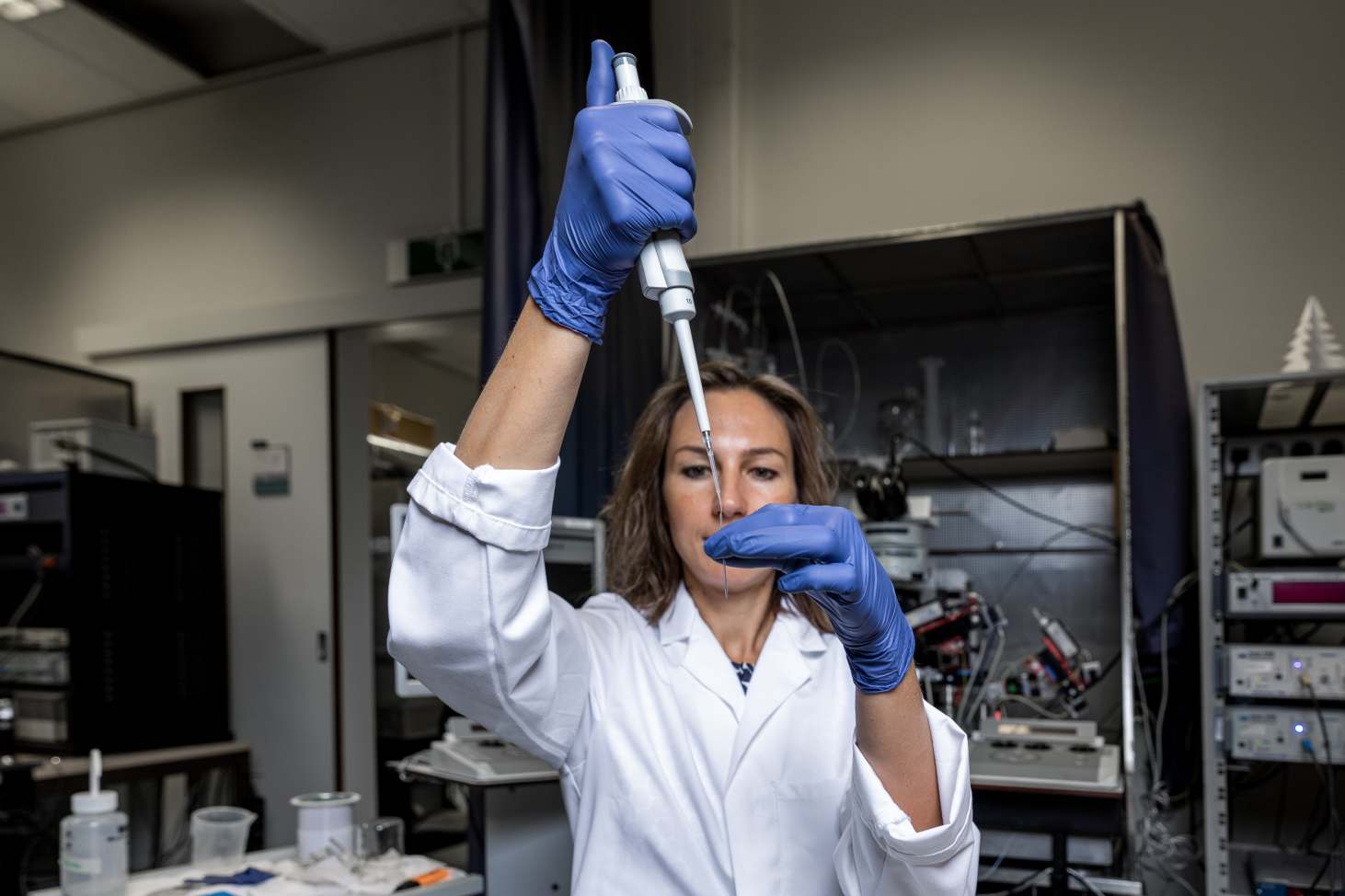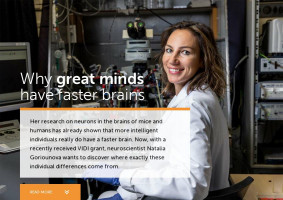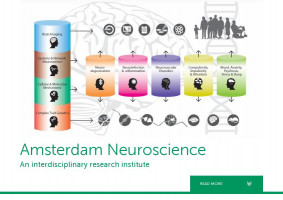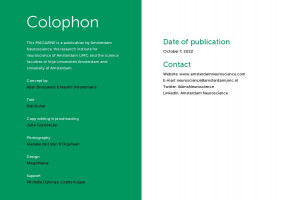When it comes to the infinite small world under the powerful microscope connected to a large monitor in this lab, seeing is most definitely believing. Under the lens is a tiny piece of brain tissue, in which a glass electrode holds one individual nerve cell. On the monitor, a one-by-one-mm piece of tissue is blown up full-screen. The cell body of the captured neuron measures just 20 microns, about a third of the width of a single human hair. “That electrode enables us to measure the electrical signals that are received or generated by such an individual cell,” Natalia Goriounova, postdoctoral researcher at the Center for Neurogenomics & Cognitive Research at the Vrije Universiteit Amsterdam, explains. “For my upcoming VIDI project, I want to go further than ‘just’ measuring electrical signals. We are going to aspirate the nucleus from an individual brain cell and isolate the RNA. By measuring the exact RNA content, we will be able to tell which genes are actually ‘on’ or ‘off’, and how active they are. This way, I hope to better understand the genetics behind the functioning of brain cells.”
From mice to humans
A fair bit of groundbreaking work had already been carried out before Goriounova set herself this almost unimaginable task. “Our research obviously started with mice,” the researcher clarifies. “Because, ultimately, you can do more to the brains of lab animals than with people. But in the end, together with the brain surgeons of Amsterdam UMC, we also found a unique source of healthy, living human brain tissue. Brain surgery is sometimes performed on people with epilepsy. In those cases, there are often times when a tiny bit of tissue needs to be removed to be able to reach the source of the epilepsy. The functions of that removed brain tissue can easily be taken over by the surrounding tissue. After all, neural plasticity makes the brain much more malleable than has been thought for the longest time. Meanwhile, that removed tissue is extremely valuable to our research. Not only is it living tissue, but it comes from the temporal lobe area – or more specifically, the middle temporal gyrus – which is involved in cognitive functioning. Previous research with MRI scanners had already shown that this part of the brain has a clear link with intelligence. Therefore, these pieces of removed tissue have taught us a lot about thinking skills.”

Different ion channels
By measuring the conduction of the electrical signal through the neurons, Goriounova and her colleagues were able to show that people with higher IQs actually had ‘faster’ brain cells. “That conduction is only partly dependent on fixed physical laws,” Goriounova acknowledges. “You can’t do much about constant things such as the speed of light, and the same goes for the conduction of an electrical signal. But the speed of a neuron is also determined by, for example, the functioning of ion channels in a cell. The shape and size of the cell’s dendrites can help it generate faster action potential. A cell with more dendrites can thus pass a signal from one cell to another faster. And all these aspects can apparently vary from person to person.”
Now that Goriounova knows that the differences in people’s intelligence can be seen right down to the cellular level, she wants to go a step further. “From genetic studies, a rough picture has already emerged of which specific genes are associated with higher intelligence. I would like to know which of these genes are active in the brain cells that we study. So, for that we need to look not only at the DNA in those cells, but more specifically at the RNA.”
A clever pill
The researcher is sure to emphasize that her main concern is the fundamental understanding of thought and intelligence. “I want to understand how we can understand,” she jokingly summarizes. “In case you were already thinking of any kind of intervention to influence intelligence: I don’t believe there will ever be a pill that will increase the speed of our brain cells. The potential side effects of such an imaginary pill would soon outweigh its advantages. If brain cells fire too quickly, you could end up with epilepsy. Besides, why would you want to create a new intervention to make people smarter, when we already have the best intervention you can imagine?” Goriounova adds with a wink. “After all, education and training are extremely effective in making our plastic brain a little smarter.”
Photography: Marieke de Lorijn













